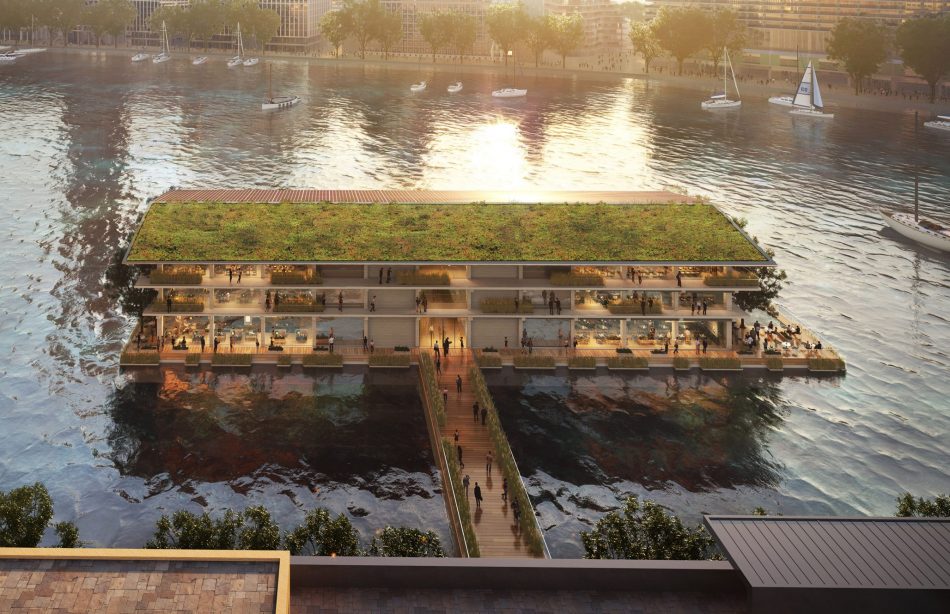While Rotterdam is typically known for hosting Europe’s biggest port, the second largest Dutch city is also famous as a forerunning innovator in climate adaptability. This reputation is reflected by (among other things) a floating dairy farm located near the port, as well as by the more recently completed Floating Office Rotterdam (FOR) — the world’s largest floating office, designed to adapt to rising sea levels.
Recently inaugurated by King Willem-Alexander of the Netherlands and former UN Secretary-General Ban Ki-moon, the office serves as the headquarters for the Global Center on Adaptation, which Ki-moon chairs.
The project, located in Rotterdam’s Rijnhaven harbor, measures 3,606 sq m (roughly 38,800 sq ft) and consists of a large terrace area, as well as three floors. The structure is topped by a green roof, while the upper floors feature overhanging balconies to shade the interior. Its framework is made from prefabricated timber and rests on top of 15 concrete pontoons which are anchored together to create a solid floating base, reports New Atlas.
FOR’s also features an 800-sq-m (8,611-sq-ft) solar panel array connected to a battery that provides all of the building’s electricity. Additionally, the floating office uses the harbor water as a heat sink to help provide efficient heating and cooling.
The structure is expected to remain in place for ten years, after which it may host another tenant or be moved to another location. The designers also ensured that at the end of its useful life, the construction could be easily recycled.
“The carbon-neutral building is designed to be climate resilient and will float if sea levels rise due to climate change,” says Powerhouse Company, the design company behind the project. “Our climate-resilient office is both an illustration of the center’s mission and sets an example for how to build sustainable floating structures.”











